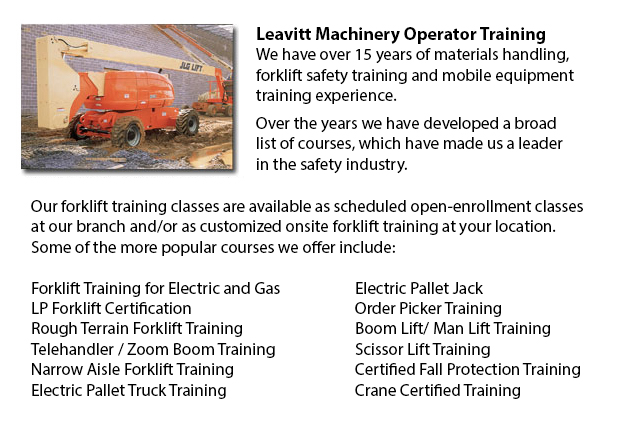
Boom Lift Certification Penticton - Elevated work platforms allow work and maintenance operations to be done at heights which could not be reached by whatever other method. Workers making use of scissor lifts and boom lifts can be educated in how to safely operate these devices by getting boom lift certification training.
Despite the variety in lift style, applications and site conditions, all lifts have the potential for death or serious injury when operated unsafely. Electrocution, falls, crushed body parts, and tip-overs could be the terrible result of incorrect operating procedures.
To avoid aerial lift incidents, individuals should be qualified in order to train workers in the operation of the specific type of aerial lift they will be utilizing. Controls must be easily accessible beside or in the platform of boom lifts used for carrying workers. Aerial lifts must never be modified without the express permission of other recognized entity or the manufacturer. If you are leasing a lift, make sure that it is correctly maintained. Before utilizing, safety devices and controls need to be inspected to be able to make certain they are correctly functioning.
It is important to follow safe operating procedures in order to avoid workplace incidents. Driving an aerial lift while the lift is extended should not be done, nevertheless, a few models are designed to be driven when the lift is extended. Set outriggers, if available. Always set brakes. Avoid slopes, but when necessary make use of wheel chocks on slopes that do not go over the manufacturer's slope limits. Adhere to load and weight limitations of the manufacturer. When standing on the platform of boom lifts, utilize a safety belt with a two-foot lanyard tied to the boom or basket or a full-body harness. Fall protection is not needed for scissor lifts that have guardrails. Do not sit or climb on guardrails.
This course consists of the following topics: training and certification; safety guidelines to prevent a tip-over; checking the work area and travel path; surface conditions and slopes; stability factors; other guidelines for maintaining stability; weight capacity; leverage; testing control functions; pre-operational inspection; mounting a motor vehicle; safe operating practices; overhead obstacles and power lines; safe driving procedures; PPE and fall protection; use of lanyards and harness; and prevent falling from the platform.
When successful, the trained worker would be familiar with the following: authorization and training procedures; pre-operational check procedures; how to avoid tip-overs; factors affecting the stability of boom and scissor lifts; how to utilize PPE, how to utilize the testing control functions and fall prevention strategies.
-
Forklift Certification Schools Penticton
Forklift Certification Schools Penticton - In North America, forklift certification is mandatory, making forklift training programs essential for both the business and their employees working as operators of forklifts. Forklift training focuses on sa... More -
Telehandler Training Courses Penticton
Telehandler Training Courses Penticton - The employer has the responsibility to make sure that their personnel are trained to work proficiently utilizing telehandler machinery. The workers have to be assessed for their ability to utilize the machine.... More -
Certified Fall Protection Training in Penticton
There are many injuries at work linked to falling and lots of fall-related deaths reported each and every year. Most of these instances might have been prevented with better training, better precautions in place, and by properly equipping employees b... More -
Zoom Boom Training Penticton
Zoom Boom Training Penticton - Zoom Boom Training is designed to train operators on variable reach forklifts. The objectives of the training are to impart an understanding of the physics of the machine, and to outline the operator's job. This course... More -
Crane Training Schools Penticton
Crane Training Schools Penticton - We have designed various Mobile Crane Operation programs at our Crane Training Schools. These programs are recommended for the experienced operator who needs re-certification or certification, and for inexperienced... More -
Aerial Lift, Boom Lift, Man Lift, Scissor Lift Training in Penticton
Lift tables or also referred to as scissor hoists can lift up both individuals and materials vertically. They are normally utilized in industrial, construction and commercial environments. Normally, the use of a scissor forklift is to lift and lower... More -
Forklift Training Program Penticton
Forklift Training Program Penticton - The forklift is a common powered industrial vehicle which is in wide use nowadays. They are occasionally known as hi los, lift trucks or jitneys. A departments store will utilize the forklift to unload and load m... More -
Overhead Crane Training Penticton
Overhead Crane Training Penticton - An overhead crane is a large crane used to move and lift huge, heavy objects that cannot be lifted by hand. An overhead crane is normally fixed in position while in use. These machines are capable of moving huge vo... More

Forklift Training Penticton
TOLL FREE: 1-888-254-6157
Penticton, British Columbia
forklifttrainingpenticton.com
Email Us
About Us


